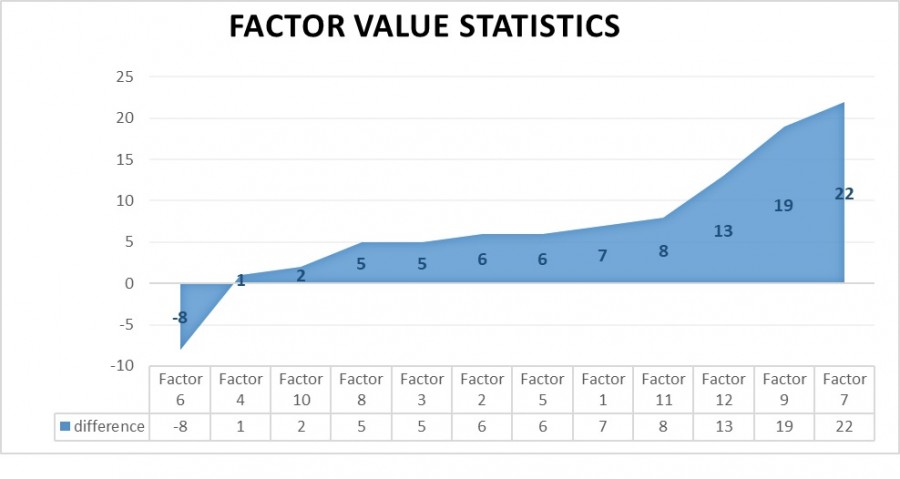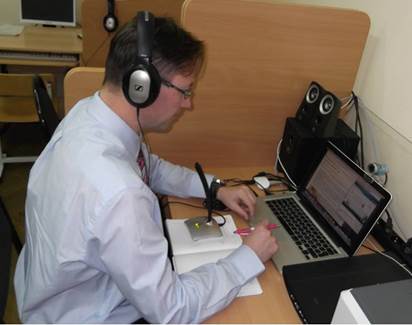1. Introductions to early learning
Each school year a certain percentage of students who haven’t achieved the qualification leave secondary education prematurely. Some of them switch to another school or some other type of education, but it is particularly worrying for the young people who leave the education system completely for various reasons. Incomplete education is an increasingly important risk factor both from the point of view of the individual and society. Although there is an increasing interest in this area and some research projects can be explored, the issue is still largely neglected. Education is one of the key factors in modern, individualized society, which through the exercise of the profession and the level of financial valuation determines the individual’s social status on the social rankings. Employers’ qualification requirements are steadily increasing, competition in the labor marker is growing. The EU statistical office, Eurostat (2014), shows that, on average, almost 14% of young people in the European Union are dropping out of school early and more than half of them are unable to find a job. In the Czech Republic, 5,5% of teenagers left high schools in 2014, but further development is disturbing, in 2017 it is already 6,7% of students. The issue of early school leaving is very serious and focus to improve dropping out early from school is among the main stated Europe 2020 objectives. These are the European Unions strategies to achieve a new growth in employment over the next decade, increasing productivity and improving the level of education. Long-term unemployment, dropout, dependence on social benefits, lower quality of health, or increased risk behavior are only some of the consequences of early school leaving
2. Research methodology
The aim of the research was to expand on the issue of early school leavers from high schools in the Czech Republic, to map the areas, to describe the causes leading to unfinished education and to define the key problems of students. The basic research question is followed by further questions:
What are the most common causes of early school leaving?
Are adolescents from incomplete families threatened by early school leaving?
Does a low-ranking parent have an influence on the completion of a secondary vocational school?
Does a family or an incomplete family influence early school leaving?
Do students who have health problems leave high school?
Is the wrong benefit of the risk factor leading to school leaving?
Does the risk behavior of students endanger the proper completion a secondary vocational school?
Are the Special Educational Needs (SEN) among high school students obstructing the completion of studies?
Is school availability the cause of early departure?
Is the choice of inappropriate high school the reason for early school leaving?
Does the school climate affect the completion of high school?
The research questions were verified using questionnaires with dichotomous questions. Concepts of questionnaires, content and form of items, structure and graphic form were published from cooperation of high school teachers and specialists of the pedagogical-psychological counseling. For the processing and evaluation of the data from the questionnaires, the mathematical and statistical method of Leven’s t-test of homogeneity of scattering was used to find out the significance of the differences. This is a parametric significance test in which two sets of data were obtained by measuring in two different groups of young people.
3. Characteristics of research environments and data collection
The research was conducted with students from 1st – 4th years of seven high schools based in the Czech Republic. At the same time, we have always approached several former students of these schools who have dropped out of school early in the past two years.
There is at least one educational counselor in each of these high schools, with close co-operation. The research sought out the necessary data from school matrices and from the school’s internal records. More information and contacts were gained for young people who had dropped out of high school in the past two years (in 2012 and 2013). This group of respondents was contacted by telephone and subsequently invited to interview and fill in the questionnaire. Part of the respondents completed the questionnaire by phone.
The questionnaire had closed (dichotomous) questions. According to school records with the input of educational counselors, students who are still studying at high school but are potentionally at risk of events that could lead to their early leaving.
This means that they have noticed a high absence (many excused or unapproved hours) at this time, they have had poor benefits, or have not fulfilled their school duties.
Administration (questionnaire) was conducted by a part of the respondents by telephone, but mostly by direct questioning in high school buildings. This phase took place from October 2013 to May 2014.
In the next stage of research, the obtained quantitative data were analyzed using the mathematical – statistical method Leven’s t-test dispersion homogeneity – comparsion of the averages of the two groups. It is a special case ANOVA (Analysis of Variance) – scattering analysis. It is a method of mathematical statistics, which makes it possible to verify whether the value of a character that can be observed in an individual has a statistically significant influence on the value of a random variable for an individual. This sign must only acquire the final number of possible values and serve to divide the individuals into mutually comparing groups [8, p. 75].
We compared two models – dropout and grades decreasing (two averages in independent selections).
Therefore, a test of difference in average values of the character was perfomed in two selected groups according to the dichotomous character, where we were interested in data dispersion and the significance of the difference between the variables.
The aim is to predict criteria we choose (factors leading to early exit). We have obtained the outputs in the form of tables and charts, which are commented on. The data was subsequently described and interpreted.
4. Characteristics of the research sample
The research sample consisted of two equally large groups divided by one parametr – a simple ANOVA design. The pair design was chosen based on the assumption that there is a link between the objects in the compared groups.
By intentional selection, 81 respondents (dropout) were included in the test, who left education at the secondary vocational school in the last two years.
The same number, that is, 81 students, were those who studied at high school at that time. In total,
162 young people aged 15 to 20 were included in the research, of which 96 men and 66 women.
The basic characteristic of the sample under investigation is described in the following table.
Table 1: Basic parameters of the acquired file
| Number of respondents | ||
| Sex | woman | 66 |
| man | 96 | |
| Early departure | dropout | 81 |
| threat | 81 | |
| Age | 15–20 | 162 |
Explanatory notes to Table 1:
Dropout – young people who have dropped out of high school on the past two years.
Threat – students currently studying at high school but at risk of early school leavers.
The distribution of students in terms of early school leaving from secondary vocational schools is completely balanced. Half, i.e. 81 respondents are young people who dropped out early (dropout). The second half, i.e. 81 respondents, are students currently studying at secondary vocational schools who are at risk of early school leaving (threat).
Factors definition
Table 2: List of factors that can lead to early school leaving
| List of Factors | ||||
| Factor 1 | Low qualification of parents | |||
| Factor 2 | Unemployment in the family | |||
| Factor 3 | Incomplete family | |||
| Factor 4 | Divorce of parents during studies | |||
| Factor 5 | Problematic family climate | |||
| Factor 6 | Special Education Needs (SEN) | |||
| Factor 7 | Poor benefit | |||
| Factor 8 | Health problems | |||
| Factor 9 | Risk behavior of the students | |||
| Factor 10 | School availability | |||
| Factor 11 | Inappropriate school orientation | |||
| Factor 12 | School climate | |||
Table 2 gives a list of twelve factors, the subject of the survey being their risk rate regarding early school leavers from high schools.
5. Research results
In statistical testing of differences between variables (groups), we first detected scattering of data. We were wondering if the differences in the groups were statistically significant or just a coincidence. Groups of dropout and students at risk were tested for compliance with the parameters of our research. Scattering analysis in based on pairing models.
Subgroups in the main groups were consistent, which meant that we could continue to research variability within the main groups. We evaluated the level of materiality and applicability of the factors examined and obtained aggregate information on the significance of the selected circuits.
It shows the factors that show suffcient differences between the two groups studied (dropout and threat). In summary, we provide a clear overview of risk factors that affect early school leaving.
Table 3: Overall risk factor evaluation
| Evaluation of risk factors | ||||||||||
| Factor number | Risk factor | Threat | Dropout | Total | Difference | |||||
| 1. | Factor 7 | Poor benefit | 36 | 58 | 94 | 22 | ||||
| 2. | Factor 9 | Risk behavior of the students | 16 | 35 | 51 | 19 | ||||
| 3. | Factor 12 | School climate | 7 | 20 | 27 | 17 | ||||
| 4. | Factor 11 | Inappropriate school orientation | 32 | 40 | 72 | 8 | ||||
| 5. | Factor 1 | Low qualifications of parents | 13 | 20 | 33 | 7 | ||||
| 6. | Factor 2 | Unemployment in the family | 20 | 26 | 46 | 6 | ||||
| 7. | Factor 5 | Problematic family climate | 18 | 24 | 42 | 6 | ||||
| 8. | Factor 3 | Incomplete family | 35 | 40 | 75 | 5 | ||||
| 9. | Factor 8 | Health problems | 23 | 28 | 51 | 5 | ||||
| 10. | Factor 10 | School availability | 37 | 38 | 75 | 1 | ||||
| 11. | Factor 4 | Divorce of parents during studies | 6 | 7 | 13 | 1 | ||||
| 12. | Factor 6 | Special Educational Needs | 14 | 6 | 20 | -8 | ||||
Table 3 summarizes the factors in Table 2 and ranks them according to the level of difference. The results of the t-test (scattering homogeneity) are transformed here to the number of positive responses in the monitored dropout and endangered groups.
The first, second and third (yellow fields) indicate highly significant factors:
factor 7 – poor benefit, factor 9 – risk behaviour of the student, factor 12 – school climate. The greatest difference or the most significant significance was factor 7 – Poor benefit. The fourth, fifth, sixth, seventh, eighth, ninth ant tenth lines (green fields) highlight average risk factors. Factor 11 – inappropriate school orientation, factor 1 – low qualification of parents, factor 2 – unemployment in the family, factor 5 – problematic family climate, factor 3 – incomplete family, factor 8 – health problems, factor 10 – school availability.
Line eleven (grey) means that this factor has been rated as low risk, it is not important for our research goal. Factor 4 – divorce of parents during studies. The twelfth line (blue) was included in the least significant and therefore the least risky factor, factor 6 – special educational needs.
This factor is very well threated in the schools studied. Students with special educational needs are provided with supportive measures that have a positive effect on school success. These young people mostly don’t leave high school and don´t leave early education.
6. Data interpretation
Graph 1: Overall statistics of the observed values of individual factors

Graph 1 shows the risk of individual factors. The value of factor 6 is the lowest (students with SEN), so the least significant. These students are not at threat of early school leaving due to special educational needs. Factors 7, 9, 12 show the highest values. Poor benefit, risky behavior and the school atmosphere are among the riskiest groups that should be prevented and intervened in schools. These factors need to be considered.
As the riskiest factors affecting early school leaving, the following were evaluated: poor benefit, risk behaviour of the students and poor school climate.
In the Czech pedagogical terminology, the student’s benefit is to evaluate results in individual subjects, by grades according to the official classification scale. From the point of view of pedagogy, the concept of poor benefit is explained as student’s failure, adolescent failure in school climate [7, p. 223]. In the concept of traditional pedagogy as well as the lay public, school failure is characterized by under-average to insatisfactory results in school assessment, so-called student’s educational outcomes (“bad grades”).
Formally, an unsatisfactory student in high school is classified as “failed”.
In general, it can be argued that the poor benefit of disadvantage of students depends on many factors.
We can divide them into inner and outer. Internal causes of school misconduct include, for example, low intelligence, student’s motivation, psychological properties and processes, learning methods, knowledge, skills and habits, student’s current status or lack of interest in the subject [2, p. 155].
External causes can be, for example, a teacher and teaching methods, the way of education or the disinterest of the student [3, p. 112].
For the purposes of our research, we focused on the results of student education in compulsory and optional subjects, which sets out of the school’s educational program for the given year. Students with one or more subjects rated mark 5 (insufficient).
Under the term the risk behavior of a pupil it is understood a behavioral pattern that results in a demonstratable increase in health, social, educational and other risks for an individual or society. Risky behavior in the current school environment is particularly linked to the following areas: aggression, minor thefts, extremism, gambling, homophobia, intolerance, cyberbullying, racism, sexual behavior, spectrum of eating disorders, bullying, substance abuse, vandalism, truancy, dependency behavior.
We consider patterns of risk behavior to be a set of phenomena which existence and consequences can be subjected to scientific research and can be influenced by preventive and therapeutic interventions.
To prevent risk behaviors, we consider some type of health, social, educational or other interventions to prevent risk behaviors, to prevent further development, to mitigate existing forms and manifestations of risk behavior or to help deal with its consequences [6, p. 49].
When we were collecting data from school records (school matrix, documentation of educational counselors and school prevention methodologists), it was found that in Czech high schools the most frequent occurence of risky behavior is truancy and the use of addictive substances. This area needs to be intensively monitored as early as the 1st year of high school, or to arrange cooperation with the elementary school where a student comes from.
School climate consists of two mutually intermingling components:
- school climate – a subjectively perceived phenomenon expressing the quality or interpersonal relationships and social processes in a given school as experienced and evaluated by individual actors, e.g. teachers, students, student’s parents, school staff and others,
- class climate – a socio-psychological variable representing long-term social and emotional attunements, generalized attitudes and relationships, emotional responses of students of a given class to events in class, including pedagogical work of teachers [4, p. 257].
The climate of the classroom, which can be defined as the steady practices of perception, experience, assessment, and response to what happened in the classroom, is happening or is going to happen in the future.
It is a social construct, regarding the personal experience of individuals (students, teachers), that is formed, it is a group phenomenon and is influenced by the wider social context [1, p. 21].
Conclusion
What are the most frequent reasons for early school leaving? A key stage for successfully adapting students, creating a positive environment and nurturing conditions for the school environment is the first semester of the first year of high school. The primary role here is the relationship, didactic and system support of the school and the educators. The riskiest factors influencing the early completion of Secondary education in the Czech Republic were poor benefit, risk behavior of students and poor school climate. Preventive measures should be taken to identify pupils at risk of these factors. Poor student achievement can be eliminated in schools by observing pupil outcomes in the classroom for a long period of time, by monitoring their classifications and by the teacher’s overall assessment of his / her knowledge and skills. The risk behavior of pupils must be ascertained from the submitted records of the documentation available to the educational counselor from the completed elementary school of the pupil (school registry, records of the educational counselor and school prevention methodology, evaluation of the pupil’s behavior on the certificate). Cooperation with school counseling facilities is necessary, i.e. pedagogical-psychological counseling or special pedagogical center. Pupils’ behavior should be carefully monitored immediately after the start of pupils in the first year of secondary school and preventive care within the counseling center of a secondary school (school psychologist, special pedagogue, educational counselor, school prevention methodologist). The school climate is another high-risk factor that has been identified as the cause of early school leaving. The classroom climate is very advantageous to monitor purposefully by means of general questionnaires for pupils and systematic work of a teacher and a school psychologist with a class.
Implementing effective prevention strategies always involves specific individuals and understanding their current situation. It should focus on the individual's needs and the environment in which they live. Although the causes of early departures may be judged differently by teachers and pupils (objective, subjective reasons), we find some consensus at a deeper level. Early departures are a complex phenomenon and usually have no single cause but are based on the personality and role of each participant. In this context, early school leaving should be a process in which several stages precede the act of leaving itself. During these periods, it is possible to intervene effectively and to influence the pupil so that his/her departure is reversed.
The proactive search for early retirement individuals, systematic work to motivate them, work with the family of such vulnerable pupils, and support at different levels are currently mainly on the teachers’ shoulders. The activities are based on the school or teacher`s initiative, mostly from his / her personal time investment. Here it is necessary to define precisely the competences, to offer schools and teachers tools that are effective and legally acceptable.
Early recognition of student’s problems is important for staying at school and for the successful completion of the training. Poor student’s qualifications, family unemployment, parents` divorce and incomplete family, or the overal problematic family environment haven’t been identified as a significant factor, as well as the student’s health problems, accesibility or inappropriate focus of the school. The hypothesis that students with special educational needs are more at risk of early school leaving than students without need for supportive measures has not been confirmed. The leaving of education without sufficient qualifications becomes an unadverse phenomenon, especially in terms of unemployment and not starting of young people’s employment.
Comprehensive policy measures against early school leaving should focus on prevention, intervention, and compensation in this area based on the recommendations of the EU 2020 strategy.
The author focuses on these phenomena in a follow-up study, which focuses on research into the school climate in Czech high schools and forms of appropriate intervention measures.
Literature
- Čapek, R. Classroom climate and school climate / R. Čapek. - Prague: Grada, 2010. – 21 p.
- Čáp, J. Psychology for teachers / Prague: SPN, 1983. – 155 p.
- Fontana, D. Psychology in school practise / Prague: Portal, 1995. – 112 p.
- Hartl, P. Psychological dictionary / P. Hartl, H. Hartlová. (2000) - Prague: Portal. – 257 p.
- Chráska, M. Methods of Pedagogical Research: Basics of Quantitative Research / M. Chráska. - Prague: Grada, 2007. – s.
- Miovský, M. Proposal of the recommended structure of the minimal preventive program of risk prevention for elementary schools / M. Miovský. - Prague: Togga, 2012. – 49 p.
- Průcha, J. Pedagogical Dictionary / J. Průcha, E. Walterová, J. Mareš. - Prague: Portal, 1995. – 223 p.
- Urbánek, T. The basics of psychometrics / T. Urbánek - Brno: MU Brno, 2002. – 75 p.












